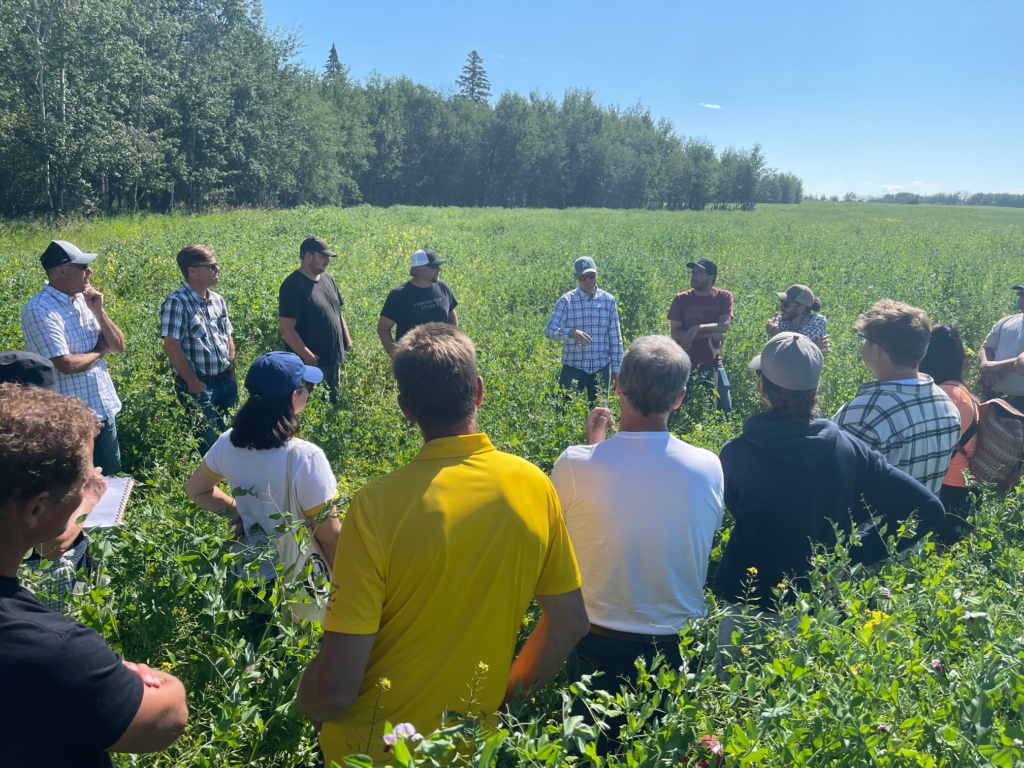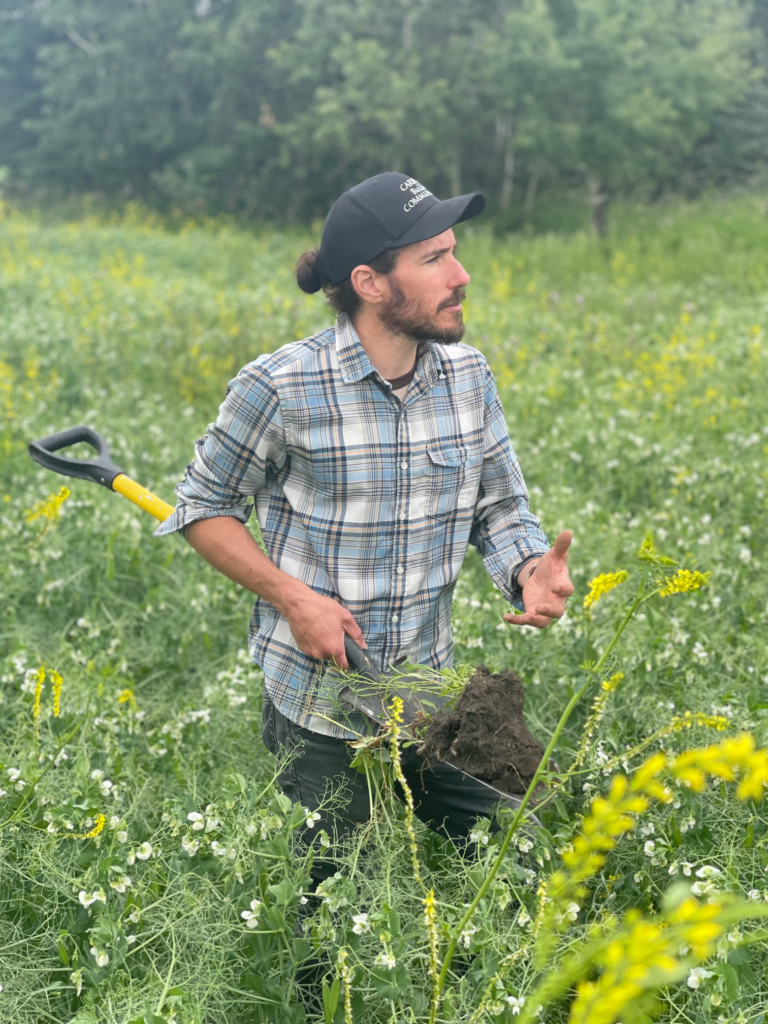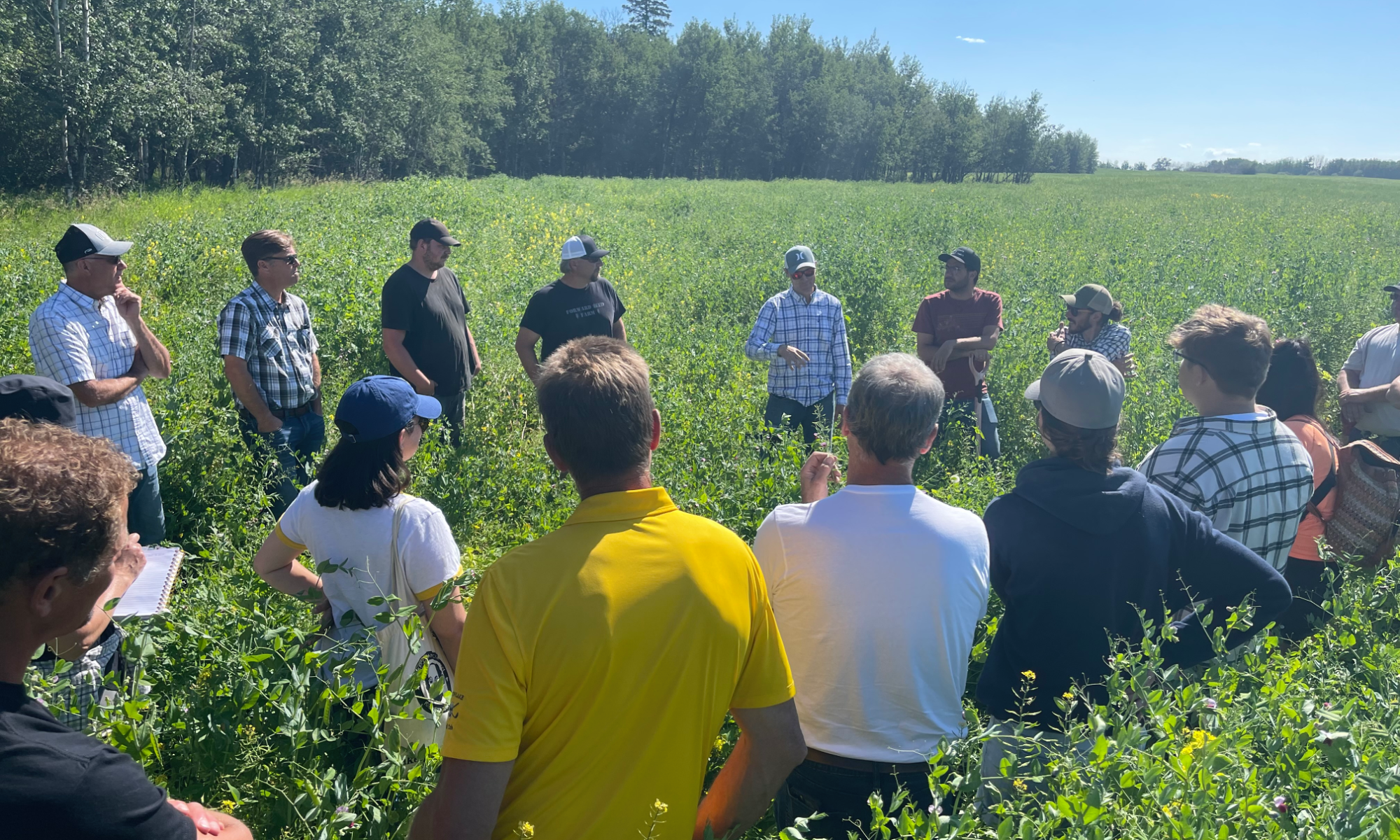During the month of July 2022, Regeneration Canada, in partnership with farms across the Canadian Prairies, held farming field days for our Discovering the Possibilities tour to demonstrate the importance of implementing regenerative agriculture into farming practices. Regeneration, and what it means to each individual, was the focal point in our discussion. For the past decade this word has become popular when describing environmental management along with climate change mitigation.
For us, regeneration starts with the soil. Our farming field days created an opportunity for farmers to share and take note of regenerative principles, from soil biodiversity and the issues that can occur when it’s not taken care of properly, to cover crops, intercrops, grazing and much more.
On July 26th, Long Family Farm hosted the second to last event on our tour in Barrhead, Alberta. There, Byron Long recounted for the group the history of the farm’s transition to regenerative practices, which began in 2016. At the time, he was facing pressures from inflation in purchased inputs, supply chain issues, and the increase in the price of land. That year, Byron met actors in the regenerative agriculture movement at an event called Ag in Motion, who taught him how to improve crop production, enhance crop protection, and integrate regenerative practices on his family farm. Putting these techniques in action, Byron saw great success and improvement on the farm, ultimately cementing his stray away from more conventional farming practices and toward regenerative ones. Despite these new farming practices being the subject of some hesitation from his neighbors, Byron was resilient in his stance. This paid off, as his efforts in breeding new varieties of crops resulted in pest resistance and climate adaptability, which allowed for his crops to grow stronger each year.

After Byron talked us through his journey and highlighted the positive results, we proceeded with the tour of his farm to observe the soil. Here, we would get a more in depth understanding of what was happening beneath our feet. Joel Williams, an expert in soil biodiversity at Sustainable Grain, explained to our group the reasons behind Byron’s success and what his practices are doing under the surface. Joel went into detail about the variety of life that exists within the soil, starting with the bacteria, earthworms, and fungi, all working together to improve plant nutrition through the breakdown of organic matter. Not only do these regenerative practices allow for better crops, but they can also act on the defensive side, providing resistance to soil erosion. Joel showcased the quality of the soil by digging up a shovel-full, displaying its different layers and the diversity within it, and explained that the richness in the soil has a direct correlation with the practices Byron has been implementing on his farm. We were witnessing soil that had been replenishing itself naturally though regenerative agriculture.

Alongside the efforts of regenerative organizations like Regeneration Canada, companies all over the world have set environmental standards to play their part in seeing a greener future. Among them is Oatly, who partnered with Regeneration Canada and Sustainable Grain to reach their objective of sourcing regenerative oats within the next few years. Oatly showcased their commitment to Canadian farmers and environmental change by collaborating with us to make regenerative agriculture more accessible to farmers across the prairies through our Discovering the Possibilities tour. The folks at Oatly made it their mission to get up close and personal to see what farming practices are being used, what infrastructure farmers need to adequately produce a healthy crop, and how Oatly can assist them. The field days were a successful first step in our partnership, serving to validate and discuss different pathways to implement regenerative practices for oat production in the prairies.
It is farmers like the Long family, forward-thinking companies like Oatly, and mission-driven regenerative actors like Sustainable Grain and Regeneration Canada that make it possible to source healthy food that tastes good and is also good for the planet: a win-win for those who are aiming to be environmentally cautious when deciding what they choose to consume.
To read more about our month in the Canadian Prairies, check out our previous blog post about the July 6th Producers’ Field Day in Minton, Saskatchewan.
*
Haedar Naso volunteers with the Yazidi community on a healing farm in Winnipeg. This summer, Haedar worked with Regeneration Canada as a coordinator for the Regenerative Farming in the Prairies tour. He gained valuable agricultural knowledge and will apply some of his new learnings on regenerative agriculture to his own community along with the healing farm.
To learn more about the Yazidi Healing Farm, join our next webinar, which will take place on August 23rd, 2022.




